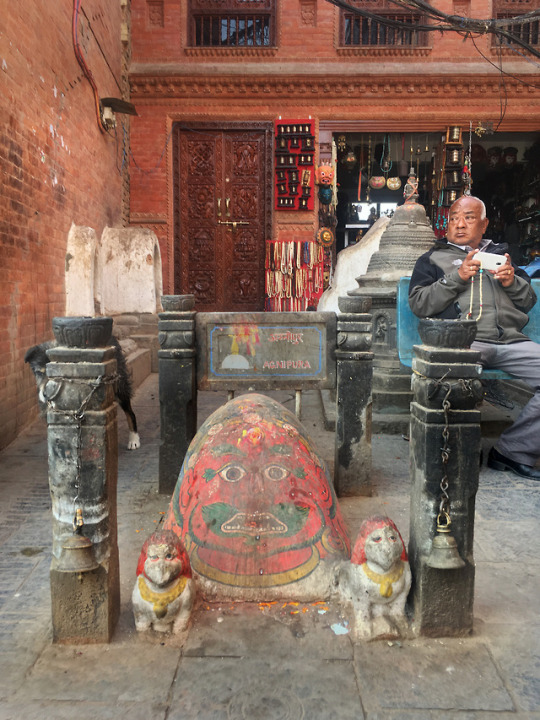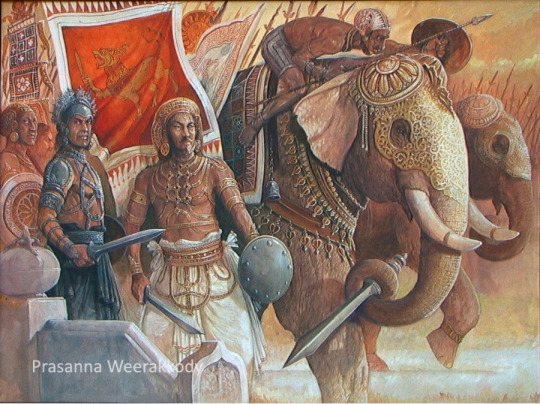#agnipura
Explore tagged Tumblr posts
Text
Concept art - The Konthalaw forest
Commonly known among the locals as the demon forest, the forest road that connects the city of Agnipura with the Nawena moors is the Konthalaw Lane. This lane is rumored to be filled with demonic monsters, and people seldom do use this road except for gem, medicine merchants and hunters.
The ancient grave site is supposedly the source for all this activity and is another place that locals avoid. This would be the setting for our story, where the antagonist performs the hymn of dawn spell in hopes of killing the protagonist.
First I looked into some reference for fantastical, haunting forests.









Process of drawing the forest setting.

I also analyzed various leaves and trees to add to the scene.


0 notes
Photo

Kathmandu, Nepal.
1 note
·
View note
Photo

bleu : l'espace (la voûte céleste) (Akashpura),
blanc : l'air (ou le vent, les nuages) (Vayapur),
rouge : le feu (Agnipura),
vert : l'eau (Nagpura),
jaune (ou orange) : la terre (Vasupara)
0 notes
Text
Worldbuilding 101 - Modern times
Politics
Many things changed over the centuries in Sindaan. Notably the land was now known as Sindas and its people Sindasians. The four religions no longer took much precedence in the world. While the religions still thrived, the leaders of each province only had a few priests as ministers. Only the Aruammas of Nawena still ruled their people. Prathans family still ruled Balanapura. The Grahaists of Upulanthe cultivated politics of democracy, having elections and then planetary observations to determine the best person to lead them. People of Agnipura created a tournament system to determine the leader of their nation.
Society and Industries.
Nawena - Maintained its medicinal and herbal practices. Many doctors and healers of Sindas originated from Nawena. The mountainous people lived healthy and long lives often adding herbs to their meals. Other than Healers, tea merchants also contributed to the society. Due to its vegetation and thick forests Nawena is also a hunting attraction which Nawena made into a meat industry.
Balanapura - Due to its close connection to the gods, became the capital kingdom of Sindas, The Gods favoured the Capuists due to their unfailing faithfulness. Because of this connection, The Balanapura lands were prosperous and the seas surrounding Balanapura were full of schools of large fish, often swimming close to the shore. This resulted in a strong fishing industry that attracted the nation. The capital city of Balanapura became Balanpura and the region was renamed to Balana dese.
Upulanthe - The stargazers became educators. Still holding on to the belief that a person’s future can be determined by the stars, fortune tellers became a respectable profession alongside educators. These teachers had many students from other nations as well. The Upulanthe people adapted to its cold, and were pioneers in technology, using fire and steam power and kinetic energy.
Agnirata - The people of Agnithanna decided to upgrade the city of Agnipura, and made a fortress city of Agnirata. This was due to the province being abandoned by the gods after the first human war in 63 BV. They decided to shelter themselves from the world, trying to win back the trust and support of the other three provinces. They were successful due to the current ruler of Agnirata, Kandas. Kandas hated what the death lot did to Prathan and how they lost Agni lives during the war. Kandas maintained good relations with the provinces. The moors proved helpful in cultivating certain vegetables and fruits but other than that the people of Agnirata mainly worked in mines found at the foothills of the mountain range, and used gold and precious stones for business. They also found demonstone and farmed it for its energy source. In terms of wealth, Agnirata was at the prow.
Currency and Monetary transactions
The idea of currency stems from the Demonists. Historically the people of Sindas maintained a barter system and like how in this world the barter system came to an end Demonists introduced a circular disk made from an expensive metal (Basically gold). This was the kahavanu and they exchanged this for products and services. Apart from Agnirata, Balanpura was the only region to use the given monetary exchanges.
1 kahavanu - 100 dabhavanu
1 dabhavanu - 10 panam
Upulanthe and Nawena regions decided to stick to the Barter system and exchanged services and various items.
Vehicles and transportation
0 notes
Text
Worldbuilding 101 - defining conflicts
The first human war of 63 BV
63 years after Prathan was created, the four regions of Sindaan were prospering under the guidance of their leaders and deities. Prathan alongside Baalada ruled Balanapura and visited the other three regions occasionally to ensure its peace and prosperity. With industries growing the people of Sindaan were embracing their hereditary gifts. While things were looking good, the Cattadiyas of Agnithanna wished to expand their territory. They used their demon summoning witchcraft to create famine and sickness in Balanapura. Since Baalada was in human form the demons wanted to hurt her and force her to come seeking aid of Agnipura(Agnipura is the capital city of Agnithanna. The city is governed by the "Maaraka Rala '' which translates to "The death lot”. This is due to the devious nature of these rulers).

But a Balleadura from Upulanthe spied on the Maaraka Rala plans and relayed this to Prathan. Even though Baalada warned him before not to enter into war(The entire reason that the Gods and deities took the oath of disappearance was to avoid war and destruction in the world.) with the Demonists Prathan believed that the Demons must be defeated. But Prathan failed to see that when all the deities came together to create him, the demons also helped and gave a part of themselves to the humans. After two years of war Prathan soon fell victim to a curse placed on him by the Death lot. Soon after Prathan the first human passed away. His body was cremated and his ashes spread around the area where he was created.
Baalada was heartbroken of Prathan’s death, she had become human and justifiably loved her partner. Unable to bear the pain, Baalada, in a final act of sadness drained the deictic energy of Sindaanians, making only a limited number of people with claims to the divine energy. This was to ensure that the effects of sorcery were limited in the world. Many scholars debate to this day why she didn’t just take away the energy entirely. But she didn’t want humans to lose faith in the gods entirely, and these priests were the mediators between them and the gods.
Prathan’s son, Dewsena was announced by the Gods as the king of Balanapura. The death lot was reduced to mere shadows, some remained as advisors to the ruler of Agnipura. Others engaged in mysterious affairs, continuing Demonism and spreading its faith throughout the land. Grahaists and Aruvedists continued their peaceful existence. Thus the Baalada Varsha era came to an end. Next year began the rule of Dewsena on the 1 PV (Prathana Varsha, in the year of Prathana)
0 notes